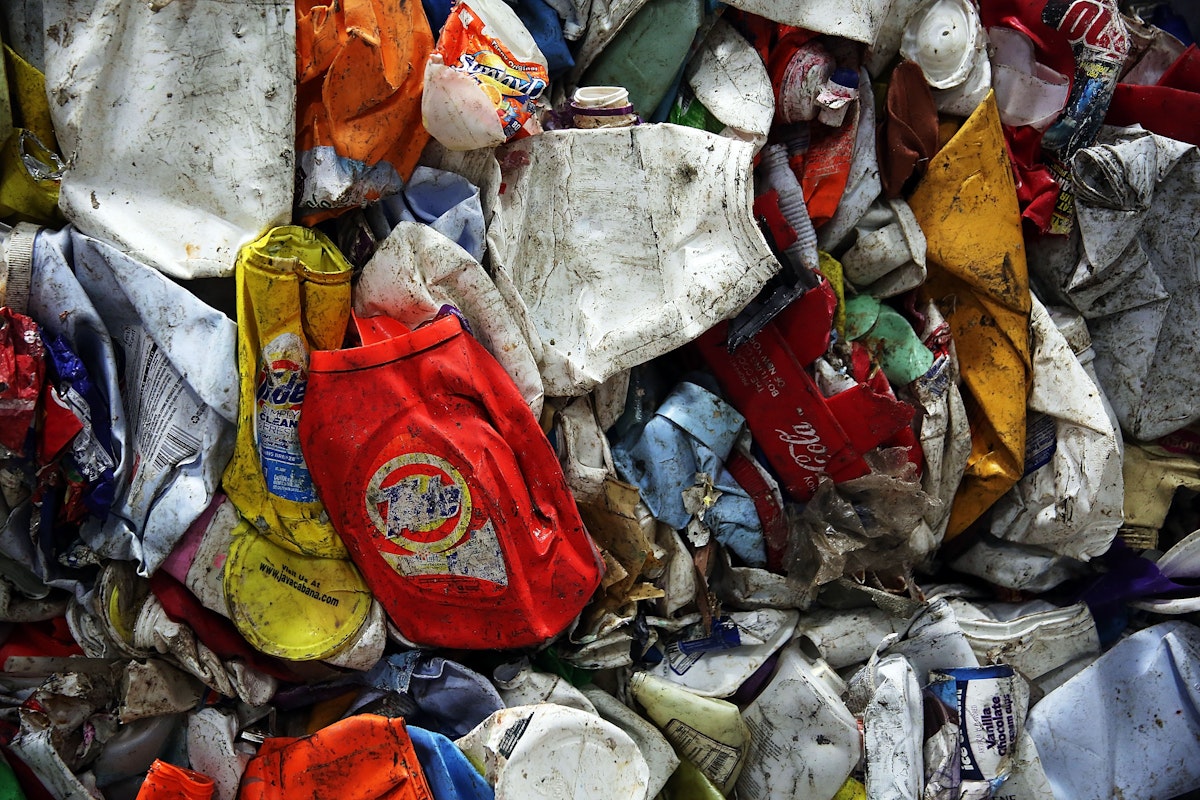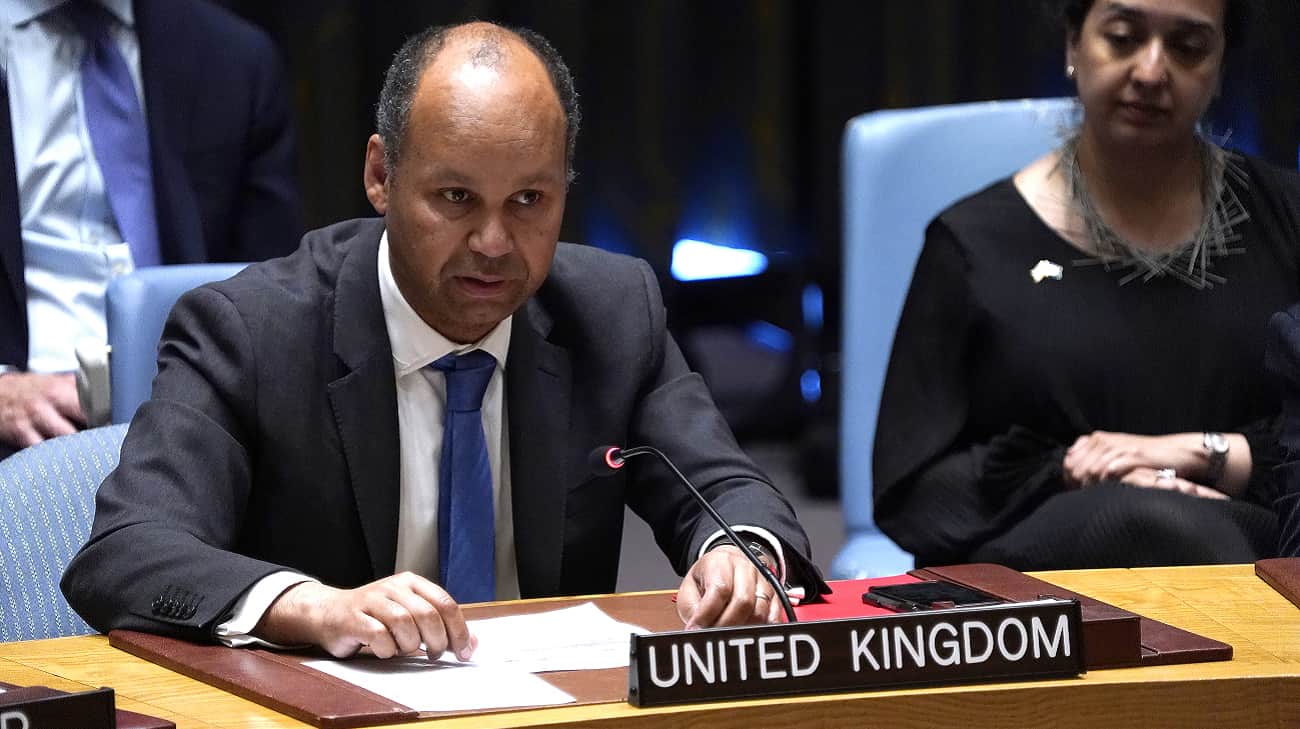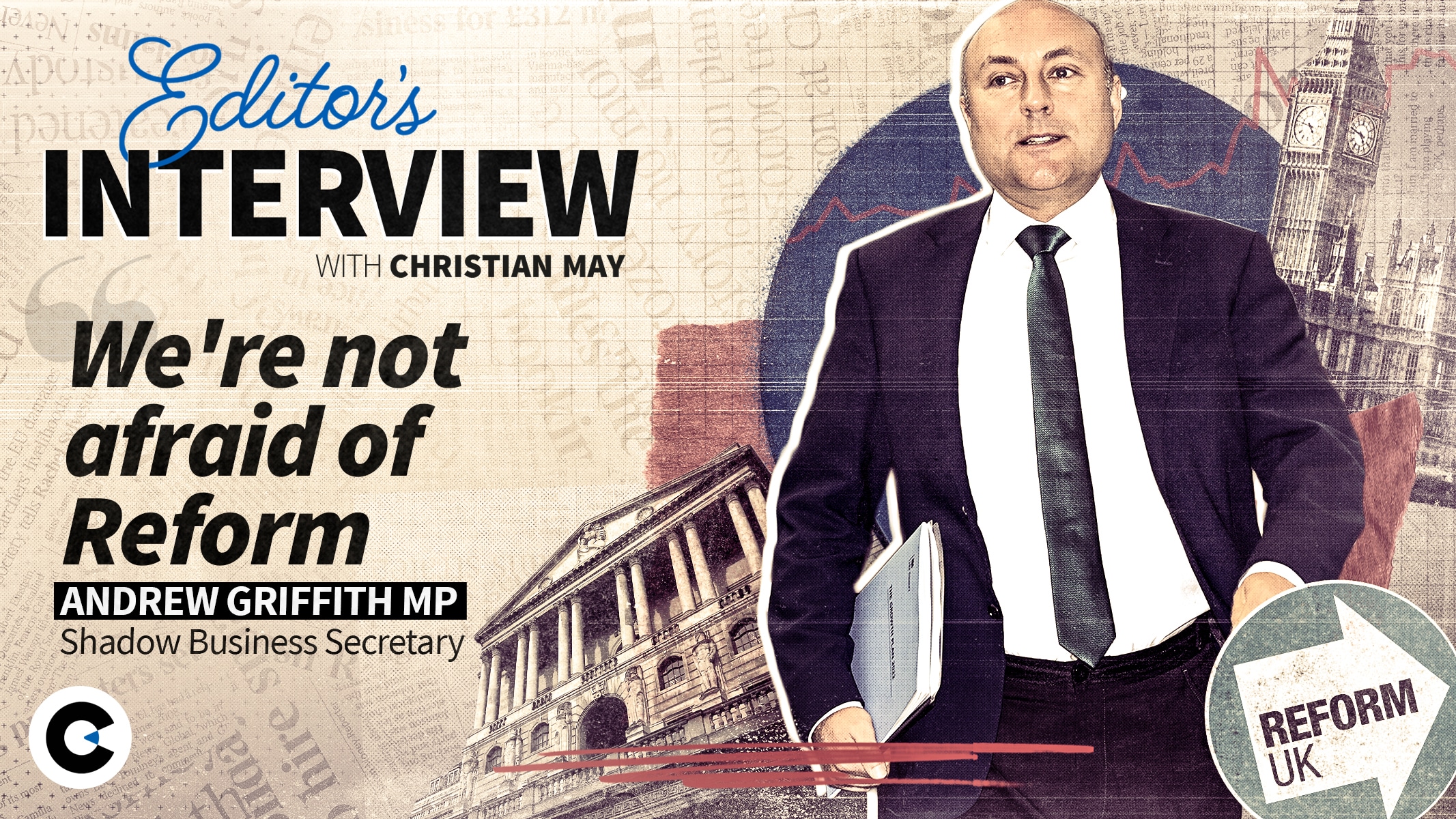The Fight to Keep the Plastics Industry From Drowning Us in Trash
Millennials in the United States grew up taking their ability to recycle plastic bottles, food containers, and other kinds of packaging as an article of faith. The more eco-conscious among us might even have chided classmates in school for tossing their Gatorade bottles into the trash instead of colorful bins emblazoned with the distinctive “chasing arrows” symbol, found on all sorts of plastic packaging as an indicator of its recyclability. By the 1990s and 2000s, that image had become synonymous not just with recycling but with a broader environmentalist ethos: Reduce, reuse, recycle. We now know that this was a myth. Vanishingly few plastics are recycled: about 10 percent worldwide, according to one estimate, and perhaps just 5 to 6 percent in the United States. As the Center for Climate Integrity found in a recent report, the plastics industry itself has known for decades that recycling plastic was much harder than its P.R. and lobbying blitzes suggested. The recycling myth was propagated to dissuade people from talking about the obvious problems of waste and the even more obvious solution: making less plastic.So what would a better system look like? And is regulating the plastics industry into sustainability even possible? Judith Enck—a former Environmental Protection Agency regional administrator, now president of Bennington College’s Beyond Plastics project—explains that the word “plastics” itself is a bit misleading. “Plastics” refers to a diverse range of resins made from oil and gas-derived chemical polymers. Among the most popular are polyethylene terephthalate, or PET, used in soda bottles, and high density polyethylene, or HDPE, used in milk jugs and other products. Polypropylene is found in everything from toys to car parts and medical devices. Many popular products are also what’s known as “mixed plastics,” which combine different types of compounds. “You might have a bright blue detergent bottle by the washing machine and a clear plastic ketchup bottle in the fridge,” Enck says. “Those cannot be recycled together. They’re different chemical makeups and different polymers.”Currently, these varied materials all tend to feature the chasing arrows symbol with a tiny number inside, indicating the type of plastic. The visual suggestion that these different materials can be recycled together is the result of a concerted industry campaign. The tiny numbers and symbols, known as resin identification codes, or RICs, were conceived of in 1988 by a plastics industry trade association to ease the adoption of recycling at a time when many people were becoming concerned about plastic waste, the Center for Climate Integrity report explains. Not long before, another trade association, the Vinyl Institute, had argued that the system was likely to have “limited practicality” thanks to the sheer abundance of mixed plastics. Despite protests from state agencies and even waste handling firms, who argued the codes would confuse consumers, the plastics industry’s successful lobbying led 39 states to codify RICs by the mid-1990s. As notes from a 1992 staff meeting of the American Plastics Council explains, the industry pushed so hard to pass these measures for a common reason: “to prevent bans.”Some jurisdictions are now trying to tackle the problem of plastic waste head-on. The New York Packaging Reduction and Recycling Infrastructure Act currently making its way through the New York State Legislature would require companies with a net annual income of more than $1 million to reduce their plastic packaging by half over the next 12 years, while regulating some of the more damaging, less viable forms of recycling. It includes a provision for what’s known as extended producer responsibility, requiring companies to pay a fee on plastic products, which will flow toward municipal governments to help with recycling and waste management efforts. If passed, the measure would also phase out 15 chemicals used in packaging, including mercury, lead, formaldehyde, and PFAS. Enck, who’s been advocating for the bill in Albany, calls it a “gold standard” example of legislation to get a handle on packaging, which accounts for 40 percent of plastics.The bill has the support of New York City Mayor Eric Adams’s administration and the city’s Department of Sanitation. That’s, in part, for budgetary reasons. The city’s preliminary 2025 budget includes a nearly half-billion-dollar line item to export waste to incinerators and landfills. Packaging fees to be paid by producers are expected to generate $150 million in revenue each year in New York City alone. Of course, the plastics industry isn’t enthusiastic. Corporate interests, including the Business Council of New York State, Dupont, and Chemours, have come out against the bill. The Plastics Industry Association (formerly SPI) has called the bill “impractical and unworkable” as written. An opposition statement filed on February 10 claims a provision allowing additional toxic substances t

Millennials in the United States grew up taking their ability to recycle plastic bottles, food containers, and other kinds of packaging as an article of faith. The more eco-conscious among us might even have chided classmates in school for tossing their Gatorade bottles into the trash instead of colorful bins emblazoned with the distinctive “chasing arrows” symbol, found on all sorts of plastic packaging as an indicator of its recyclability. By the 1990s and 2000s, that image had become synonymous not just with recycling but with a broader environmentalist ethos: Reduce, reuse, recycle.
We now know that this was a myth. Vanishingly few plastics are recycled: about 10 percent worldwide, according to one estimate, and perhaps just 5 to 6 percent in the United States. As the Center for Climate Integrity found in a recent report, the plastics industry itself has known for decades that recycling plastic was much harder than its P.R. and lobbying blitzes suggested. The recycling myth was propagated to dissuade people from talking about the obvious problems of waste and the even more obvious solution: making less plastic.
So what would a better system look like? And is regulating the plastics industry into sustainability even possible? Judith Enck—a former Environmental Protection Agency regional administrator, now president of Bennington College’s Beyond Plastics project—explains that the word “plastics” itself is a bit misleading. “Plastics” refers to a diverse range of resins made from oil and gas-derived chemical polymers. Among the most popular are polyethylene terephthalate, or PET, used in soda bottles, and high density polyethylene, or HDPE, used in milk jugs and other products. Polypropylene is found in everything from toys to car parts and medical devices. Many popular products are also what’s known as “mixed plastics,” which combine different types of compounds. “You might have a bright blue detergent bottle by the washing machine and a clear plastic ketchup bottle in the fridge,” Enck says. “Those cannot be recycled together. They’re different chemical makeups and different polymers.”
Currently, these varied materials all tend to feature the chasing arrows symbol with a tiny number inside, indicating the type of plastic. The visual suggestion that these different materials can be recycled together is the result of a concerted industry campaign. The tiny numbers and symbols, known as resin identification codes, or RICs, were conceived of in 1988 by a plastics industry trade association to ease the adoption of recycling at a time when many people were becoming concerned about plastic waste, the Center for Climate Integrity report explains. Not long before, another trade association, the Vinyl Institute, had argued that the system was likely to have “limited practicality” thanks to the sheer abundance of mixed plastics. Despite protests from state agencies and even waste handling firms, who argued the codes would confuse consumers, the plastics industry’s successful lobbying led 39 states to codify RICs by the mid-1990s. As notes from a 1992 staff meeting of the American Plastics Council explains, the industry pushed so hard to pass these measures for a common reason: “to prevent bans.”
Some jurisdictions are now trying to tackle the problem of plastic waste head-on. The New York Packaging Reduction and Recycling Infrastructure Act currently making its way through the New York State Legislature would require companies with a net annual income of more than $1 million to reduce their plastic packaging by half over the next 12 years, while regulating some of the more damaging, less viable forms of recycling. It includes a provision for what’s known as extended producer responsibility, requiring companies to pay a fee on plastic products, which will flow toward municipal governments to help with recycling and waste management efforts. If passed, the measure would also phase out 15 chemicals used in packaging, including mercury, lead, formaldehyde, and PFAS. Enck, who’s been advocating for the bill in Albany, calls it a “gold standard” example of legislation to get a handle on packaging, which accounts for 40 percent of plastics.
The bill has the support of New York City Mayor Eric Adams’s administration and the city’s Department of Sanitation. That’s, in part, for budgetary reasons. The city’s preliminary 2025 budget includes a nearly half-billion-dollar line item to export waste to incinerators and landfills. Packaging fees to be paid by producers are expected to generate $150 million in revenue each year in New York City alone.
Of course, the plastics industry isn’t enthusiastic. Corporate interests, including the Business Council of New York State, Dupont, and Chemours, have come out against the bill. The Plastics Industry Association (formerly SPI) has called the bill “impractical and unworkable” as written. An opposition statement filed on February 10 claims a provision allowing additional toxic substances to be banned threatened to target “hundreds of substances without sound scientific basis” and create “uncertainty for businesses in commerce.”
The American Chemistry Council, or ACC—whose members include top plastics producers ExxonMobil and Shell—has a total of 13 lobbyists currently registered in New York state. Those include Todd Kaminsky—former New York state senator and chair of the state Senate’s Environmental Conservation Committee—as well as six lobbyists from the MirRam Group, founded by longtime New York political operator Luis A. Miranda Jr., father of famed Broadway songwriter Lin Manuel-Miranda. While the ACC does not officially oppose the bill, Enck argues that the industry may be following a longtime playbook of trying to weaken legislation as bills make their way through state capitals. An extended producer responsibility measure passed in California in 2022, for instance, exempts single-use materials that present “unique challenges” for compliance, as determined by the state’s Department of Resources Recycling and Recovery, or “CalRecycle.” Advocates say the loophole can be used to allow all manner of single-use items to skirt regulation.
Part of what the industry has openly opposed in the New York bill is the attempt to address the environmental impact of plastics recycling. The American Chemistry Council has been particularly active in pushing lawmakers to drop the bill’s proposed ban on chemical, or so-called “advanced,” recycling, in which plastics are heated, broken down, and turned into either new plastics or (much more often) fuel. Three of the 11 chemical recycling facilities currently operating in the U.S. have been classified by the EPA as large-quantity generators of hazardous waste, as such facilities can produce dioxins, volatile organic compounds, and heavy metals. A study from Beyond Plastics notes that eight of these chemical recycling plants are located in lower-income areas; five are sited in places with higher than average concentrations of people of color.
Restricting the most damaging forms of plastics recycling—seen by critics as a lifeline for the industry to continue with reckless production—could be a vital step. But even if “advanced” recycling were as viable as the industry claims, it wouldn’t solve the other major problem facing plastics recycling: economics. As far back as 1969, one industry insider claimed that the economics of plastics recycling was “virtually hopeless,” CCI found. That picture didn’t improve much with time. Beyond the cost of sorting and processing plastic waste, creating usable materials from varied resins liable to degrade and leach out toxic chemicals is difficult and expensive. The end products are often lower quality than new, so-called “virgin” plastics. After China stopped accepting plastic waste from the U.S. and other countries in 2018, moreover, recyclers have struggled to find new buyers.
Even the types of plastics that can be more easily recycled and turned into other kinds of plastics—about 30 percent of PETS—now face a market where virgin plastics are simply cheaper. That’s owing largely to poor planning on the part of petrochemical manufacturers like Exxon and Shell, which built expensive plants to convert an abundance of gas from the shale boom into ethylene. Owing, as well, to a build-out of plastics manufacturing capacity in China, the global market for industrial chemicals used in plastics is now oversupplied; virgin plastics are dirt cheap. Even if it weren’t prohibitively expensive and inordinately dependent on government subsidies, the relatively small amount of plastics produced through chemical recycling was last year estimated to be 1.6 times more expensive than virgin resins. Another problem is structural: The companies making and selling virgin plastics have never had much of an incentive to ensure the successful production of recycled plastics that might complete with their newer offerings.
For fossil fuel producers, then, the threat of public backlash and ensuing regulation comes at a delicate moment, as the petrochemicals industry faces shaky economic prospects. Tom Sanzillo—director of financial analysis at the Institute for Industry Economics and Financial Analysis, or IEEFA—explains that companies like ExxonMobil and Chevron have until recently mostly taken for granted that the vast majority of the oil they produce would become gasoline. Climate laws and the rise of electric vehicles have thrown that assumption into question. “Now the world is turned upside down, and they’re seeing that this petrochemical stepchild is more important from a financial point of view than they ever thought it would be,” he said, adding that it’s unlikely that petrochemicals could ever serve as a replacement for gasoline, “financially or from a volume point of view.”
As the New York bill picks up momentum—it passed out of the Senate’s Environment Committee on Tuesday—federal agencies are taking modest steps to address the plastics problem. The EPA has proposed cracking down on resin identification codes, having weighed in on the matter as the Federal Trade Commission—for the first time since 2012—updates its “Green Guides,” meant to protect consumers against false claims about corporate sustainability. Last spring, EPA Deputy Assistant Administrator Jennie Romer wrote in a letter to the FTC that the symbol “does not accurately represent recyclability as many plastics (especially 3-7) do not have end markets and are not financially viable to recycle.” She further called the labeling “deceptive” and “misleading.”
Richard Wiles, director of the Center for Climate Integrity, hopes his group’s report and other damning evidence emerging about the plastics industry can lay the groundwork for lawsuits similar to those brought against fossil fuel producers in recent years. “Our position is accountability first,” he told me, and “holding the oil, gas, and petrochem industry financially accountable for the damage they caused.” Ideally, he says, that would include the enormous costs municipalities incurred by rolling out expensive plastics recycling programs over the last several decades. “We think that this particular set of facts—from the lying to the expansive, well-documented nature of this enterprise—lends itself to a number of different legal theories, from public nuisance to racketeering.” CCI has been meeting and sharing information with state attorneys general. In what might be a preview of potential actions, New York Attorney General Letitia James filed a suit against Pepsi last fall over its pollution of the Buffalo River.
The plastics industry’s greatest victory over the last several decades might have been in convincing consumers that plastic waste was their problem. That ethic of individual responsibility for environmental health was based on a foundational premise: that if you tossed your plastic into the right bin, governments and corporations would take care of the rest. Decades on, plastic recycling is more impractical than ever. As plastics production continues to rise—and its toll continues to mount—the question is whether lawmakers will halt the endless growth machine or fall for a new set of lies.



